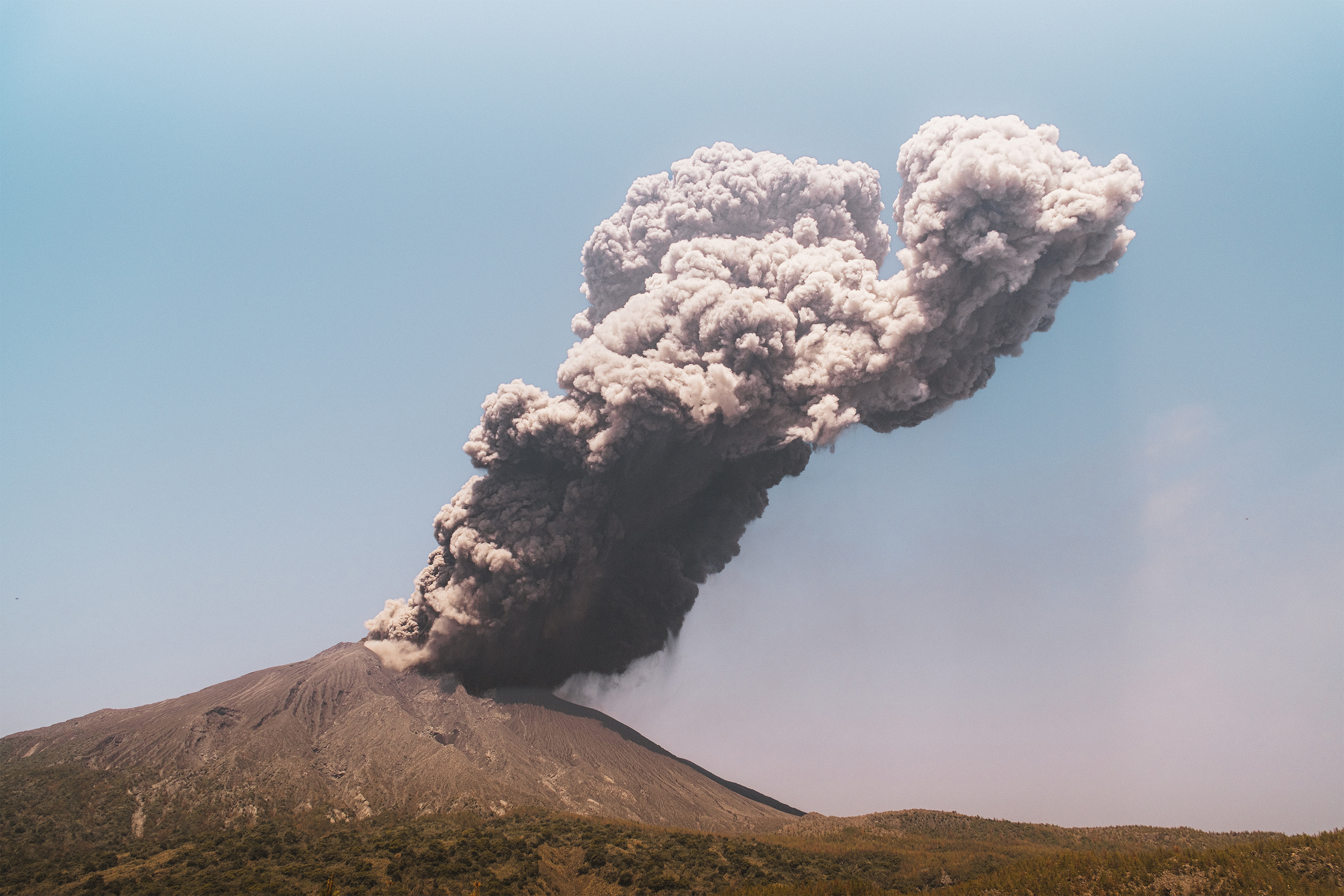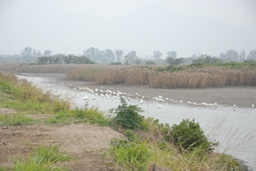Nanoscale chemical heterogeneities control the viscosity of andesitic magmas
Published in Earth & Environment and Education

On March 25th, 2025, Japan’s Sakurajima volcano erupted, sending ash plumes 2.5 kilometers above the crater rim and ejecting large volcanic blocks up to 700 meters from the vent. Photographer Rohan Ugale captured the event from the Arimura Lava Observation Deck, documenting one of many explosive eruptions during an especially active year. In the weeks that followed, Sakurajima remained highly active, with dozens of further explosions recorded throughout April and May. This sustained pattern, marked by fluctuating eruptive intensity, is typical of Sakurajima, the most active volcano in Japan.
But what exactly governs these sudden shifts in explosivity?

Eruption of Sakurajima volcano (Japan) on March 25th, 2025.
Photo by Rohan Ugale | www.rohanugale.com | @rohanugale
One key factor is viscosity, a measure of how easily magma flows. If the magma remains fluid, it can rise steadily and erupt gently. But if viscosity increases, magma ascent can slow or stall, gas pressure can build, and the result may be an explosive eruption. Scientists have long known that temperature, gas content, and chemical composition influence viscosity. But in recent years, another factor has gained attention: nanosized crystals, or nanolites, that form within the magma during ascent.
In our study, published in Communications Earth & Environment, we set out to explore how these tiny crystals, so small they can only be seen with powerful electron microscopes, influence the viscosity of andesitic magma. This question is especially important at arc volcanoes like Sakurajima, where andesitic magmas dominate and eruptions can rapidly shift between effusive and explosive behavior. Previous studies had suggested that nanolites could increase magma viscosity, but exactly how large the effect was and what caused it remained unclear.
Our research shows that even a small amount of nanolites can increase magma viscosity by up to thirty times. This is a dramatic change, enough to significantly alter how magma behaves.
But what drives this increase in viscosity?
Our experiments show that it is closely linked to the development of nanoscale chemical heterogeneity in the melt. We were able to observe the formation of nanolites in real time. The process began with the segregation of iron-rich amorphous domains, which then rapidly crystallized into titanomagnetite nanolites. Around each nanolite, an aluminum-rich shell formed, while the adjacent melt became enriched in silica. This nanoscale reorganization of the melt, which chemically zones the magma, raises its viscosity far beyond the effect of crystal content or iron extraction alone.
Our findings highlight how subtle nanoscale processes, far below the resolution of standard microscopes, can strongly influence magma behavior. Recognizing these complex controls on viscosity is a key step toward improving how we model and forecast eruption dynamics at andesitic volcanoes like Sakurajima. As this work shows, even the smallest changes within the magma can shape the scale and style of an eruption.
Follow the Topic
-
Communications Earth & Environment

An open access journal from Nature Portfolio that publishes high-quality research, reviews and commentary in the Earth, environmental and planetary sciences.
Related Collections
With Collections, you can get published faster and increase your visibility.
Geology of the Moon
Publishing Model: Hybrid
Deadline: Jan 31, 2026
Drought
Publishing Model: Hybrid
Deadline: Dec 31, 2025





Please sign in or register for FREE
If you are a registered user on Research Communities by Springer Nature, please sign in